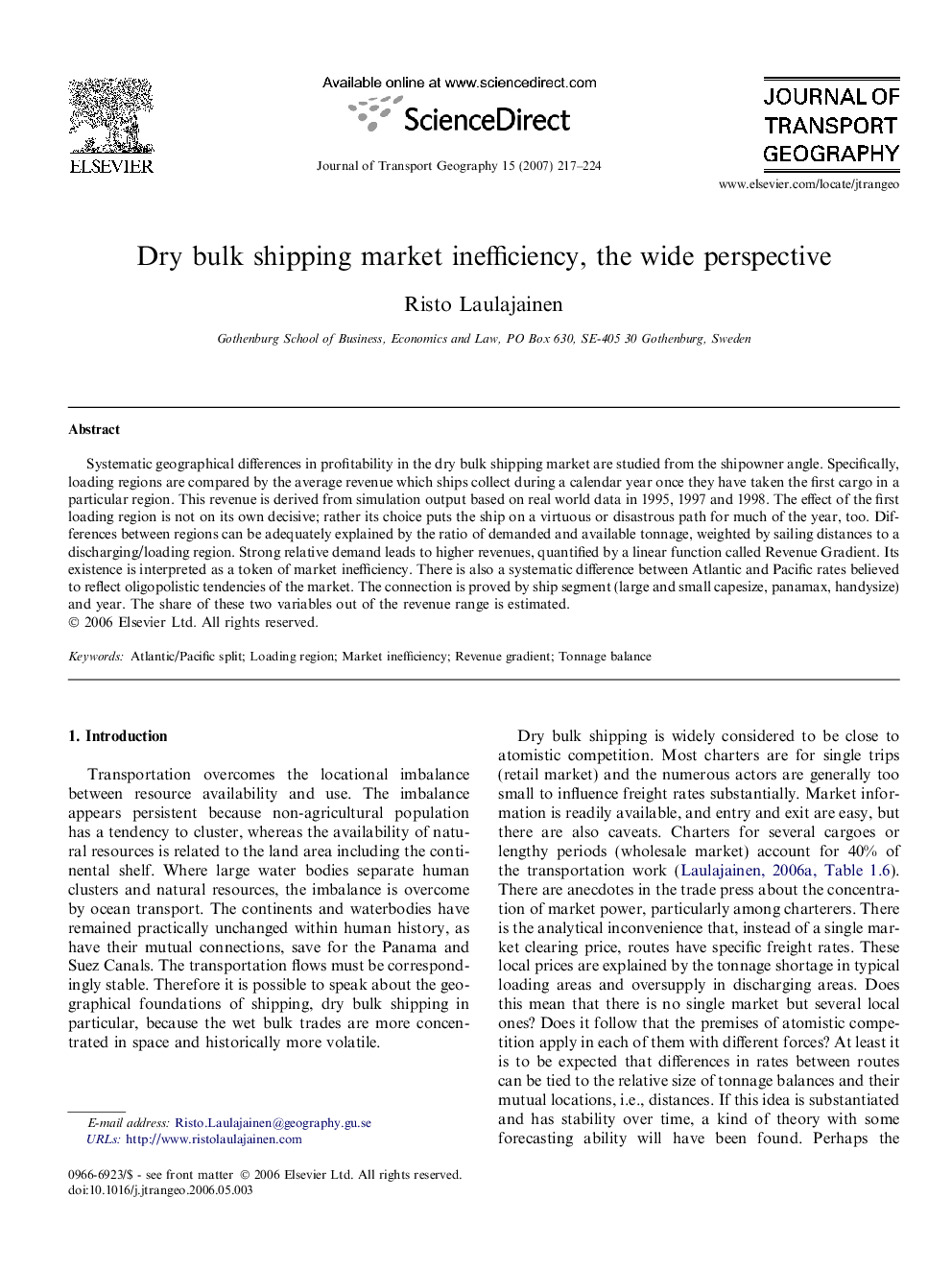| Article ID | Journal | Published Year | Pages | File Type |
|---|---|---|---|---|
| 1060111 | Journal of Transport Geography | 2007 | 8 Pages |
Systematic geographical differences in profitability in the dry bulk shipping market are studied from the shipowner angle. Specifically, loading regions are compared by the average revenue which ships collect during a calendar year once they have taken the first cargo in a particular region. This revenue is derived from simulation output based on real world data in 1995, 1997 and 1998. The effect of the first loading region is not on its own decisive; rather its choice puts the ship on a virtuous or disastrous path for much of the year, too. Differences between regions can be adequately explained by the ratio of demanded and available tonnage, weighted by sailing distances to a discharging/loading region. Strong relative demand leads to higher revenues, quantified by a linear function called Revenue Gradient. Its existence is interpreted as a token of market inefficiency. There is also a systematic difference between Atlantic and Pacific rates believed to reflect oligopolistic tendencies of the market. The connection is proved by ship segment (large and small capesize, panamax, handysize) and year. The share of these two variables out of the revenue range is estimated.
